Procurement 101: Mastering Incoterms – Optimizing Cost, Risk, and Efficiency in Global Trade
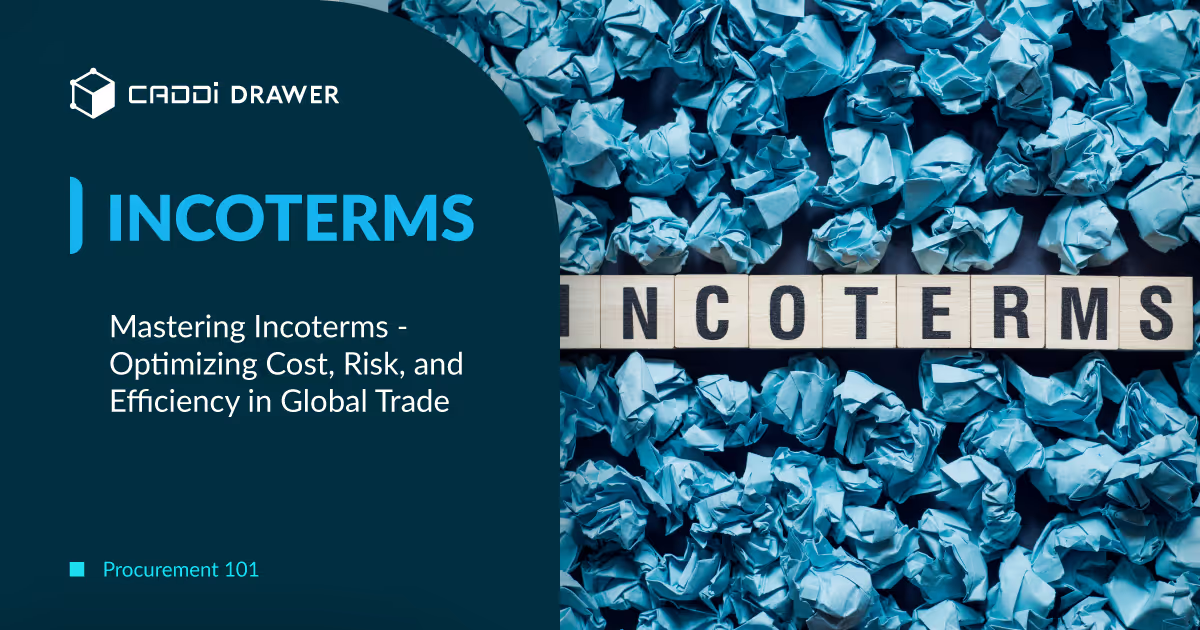
Table of Contents

Understanding Incoterms: Cost and Risk Distribution in International Trade
Incoterms are a set of standardized terms that clearly define the division of costs and risks between the exporter and importer during the international trade process.
Costs in International Trade
In international trade, various tasks such as transportation, loading, unloading, insurance, and customs clearance are typically outsourced to specialized service providers known as freight forwarders. The costs incurred for these services must be borne by either the exporter or the importer.
Risks in International Trade
International trade involves potential risks such as accidents during transportation, errors in loading or unloading, and customs-related issues. In the event of a problem, it is essential to determine which party will be held responsible for the damages.
Incoterms provide an international framework for smoothly negotiating and determining the allocation of costs and risks in trade agreements.
Incoterms 2020: 11 Trade Terms
Incoterms 2020 defines 11 trade terms, which are divided into two categories:
1. Seven terms applicable to all modes of transport: EXW, FCA, CPT, CIP, DAP, DPU, and DDP
2. Four terms applicable only to sea and inland waterway transport: FAS, FOB, CFR, and CIF
By using Incoterms, the patterns of cost and risk distribution are limited to these 11 terms, reducing misunderstandings between exporters and importers and facilitating faster negotiations.
Four Groups of Incoterms
To better understand the 11 Incoterms, it is helpful to divide them into four groups based on their characteristics:
1. E Terms (EXW): The buyer bears all costs and risks. This term is the most favorable for the seller.
2. D Terms (DDP, DPU, DAP): The seller bears most of the costs and risks. These terms are the most favorable for the buyer.
3. F Terms (FOB, FCA, FAS): Costs and risks transfer from the seller to the buyer at the same point during transportation.
4. C Terms (CIP, CPT, CIF, CFR): Costs and risks transfer from the seller to the buyer at different points during transportation.
While it may seem that “EXW” is the most advantageous term for the seller and “DDP” for the buyer, this is not always the case. When the seller assumes cost responsibilities, they will include all associated transportation costs in their quotation. Ultimately, the buyer will bear the total cost of the trade, regardless of whether “EXW” or “DDP” is used.
When determining Incoterms, it is essential to consider which party – the seller or the buyer – can take the initiative in the transaction to maximize overall profit. This consideration should guide the negotiation process.
Choosing the Right Incoterms: Key Considerations
When selecting the most appropriate Incoterms for your business, there are three main factors to consider:
- Who bears the costs?
- Who is responsible for marine insurance?
- Where will the goods be delivered?
Let’s explore each of these points in more detail.
Costs (Transportation Expenses)
Determining who pays for various costs, such as domestic transportation, customs clearance, loading, ocean freight, import customs clearance, and import domestic expenses, is crucial. The two main deciding factors are:
- Who pays for the ocean freight?
- Who covers the domestic transportation costs in the importing country?
Roughly, the cost distribution can be summarized as follows:
- EXW: Exporter wants to pay nothing
- FCA, FAS, FOB: Exporter bears domestic costs in the exporting country (including customs clearance)
- CPT, CIP, CFR, CIF: Exporter also pays for ocean freight
- DAP, DPU, DDP: Exporter handles domestic transportation in the destination country
The lower on the list, the more effort and expenses are required from the exporter.
For containerized cargo, the common middle ground is usually FCA, CPT, or CIP. For break-bulk cargo, FOB, CFR, and CIF are typically used. The decision between “FCA, FOB” and “CPT, CIP, CFR, CIP” depends on who covers the ocean freight.
DAP, DPU, and DDP are used when the exporter arranges domestic transportation in the importing country, such as delivering goods to a factory.
One potential issue with DDP is that the exporter is responsible for paying import duties, which can be difficult to determine in advance. Although research can be done, the actual invoice is received after customs clearance, and if the duties are higher than anticipated, the exporter must cover the additional costs.
Marine Insurance
The choice of Incoterms also depends on who arranges and pays for marine insurance. If the exporter arranges insurance, CIP or CIF should be used. Otherwise, any other Incoterm except CIP and CIF is appropriate.
- Exporter arranges marine insurance: CIP, CIF
- Importer arranges marine insurance: EXW, FCA, CPT, DAP, DPU, DDP, FAS, FOB, CFR
Place of Delivery
The place of delivery determines where the responsibility for the goods is transferred to the importer. The main distinctions are ‘responsibility up to the port (handing over goods to the shipping company, placing them alongside the ship, or loading them on board)’ and ‘responsibility until the designated place in the importing country’
- EXW: Seller’s premises
- FCA, FAS, CPT, CIP: Delivery point in the exporting country
- FOB, CFR, CIF: On board the vessel on the export side
- DAP, DPU, DDP: Designated place in the importing country
When using DAP, DPU, or DDP, consider whether you can truly take responsibility for any issues that may arise in the importing country.
Expertise in Trade
Frequently exporting or importing specific goods leads to expertise in that particular trade, including knowledge of regulations, freight rates, and optimal transportation methods.
For example, when importing plant equipment from Mexico to the United States under EXW, the importer must control the transportation within Mexico. This requires confidence in a trusted forwarder who can handle any issues that may arise.
Transportation volume also plays a significant role. If the exporter ships 10 containers per month from Mexico to the United States, while the importer only ships one container per month, the exporter is likely to secure more favorable freight rates due to their higher volume.
In cases where the importer’s volume is low, but the exporter has multiple clients in that country, it may be advantageous for the importer to request a CIF quotation from the exporter.
Engaging Forwarders with Regional Expertise
Working with forwarders who specialize in a particular region can be beneficial, even if the company’s transportation volume is low. A forwarder with expertise in shipping from Mexico to the United States can provide competitive freight rates.
In this case, EXW or FOB may be suitable, even if the company only ships one container per month.
Ultimately, choosing the right Incoterms involves considering the transportation volume handled by the exporter, importer, and forwarder, and selecting the most advantageous conditions for your company.
Leveraging Incoterms in Supply Chain Optimization
In today’s fast-paced business world, a well-oiled supply chain is like a finely tuned engine that powers your company’s success. But how can you ensure that your engine is running at peak performance? The answer lies in the strategic use of incoterms.
Incoterms are more than just a set of rules for international trade. They are a powerful tool that can help you optimize your supply chain, reduce costs, and gain a competitive edge in the market. Here’s how:
1. Streamlining Logistics
By choosing the right incoterm, you can streamline your logistics processes and reduce the risk of delays and disruptions. For example, if you’re shipping time-sensitive goods, using a term like DAP (Delivered at Place) can ensure that your products arrive at their destination on time, without the need for you to handle customs clearance or final delivery.
Real-World Example: Zara, the Spanish fashion retailer, uses a combination of FOB (Free on Board) and DAP to optimize its supply chain. By using FOB for shipments from its suppliers in Asia and DAP for deliveries to its stores in Europe and the Americas, Zara can maintain tight control over its inventory and respond quickly to changing consumer demands.
2. Reducing Costs
Incoterms can also help you reduce costs by clarifying who is responsible for what at each stage of the shipping process. By negotiating the right terms with your suppliers and customers, you can minimize your exposure to unexpected costs, such as customs duties or transportation fees.
Real-World Example: Apple, the global technology giant, uses a variety of incoterms to manage its complex supply chain. By using FCA (Free Carrier) for shipments from its suppliers in China and DDP (Delivered Duty Paid) for deliveries to its customers in the US and Europe, Apple can reduce its logistics costs and maintain tight control over its inventory.
3. Improving Cash Flow
Cash flow is the lifeblood of any business, and incoterms can help you improve yours by specifying when and how payment should be made. For example, using a term like CIA (Cash in Advance) can help you ensure that you receive payment before shipping the goods, reducing the risk of non-payment and improving your cash flow.
4. Building Stronger Relationships
Finally, incoterms can help you build stronger relationships with your trading partners by providing a common language and framework for negotiation. By clearly defining the rights and obligations of each party, incoterms can help you avoid misunderstandings and disputes, and foster a spirit of cooperation and trust.
In conclusion, incoterms are a powerful tool that can help you optimize your supply chain, reduce costs, improve cash flow, and build stronger relationships with your trading partners. By understanding the strengths and limitations of each term and using them strategically, you can create a supply chain that is more efficient, more responsive, and more competitive in today’s global marketplace.
Understanding Incoterms: Cost and Risk Distribution in International Trade
Incoterms are a set of standardized terms that clearly define the division of costs and risks between the exporter and importer during the international trade process.
Costs in International Trade
In international trade, various tasks such as transportation, loading, unloading, insurance, and customs clearance are typically outsourced to specialized service providers known as freight forwarders. The costs incurred for these services must be borne by either the exporter or the importer.
Risks in International Trade
International trade involves potential risks such as accidents during transportation, errors in loading or unloading, and customs-related issues. In the event of a problem, it is essential to determine which party will be held responsible for the damages.
Incoterms provide an international framework for smoothly negotiating and determining the allocation of costs and risks in trade agreements.
Incoterms 2020: 11 Trade Terms
Incoterms 2020 defines 11 trade terms, which are divided into two categories:
1. Seven terms applicable to all modes of transport: EXW, FCA, CPT, CIP, DAP, DPU, and DDP
2. Four terms applicable only to sea and inland waterway transport: FAS, FOB, CFR, and CIF
By using Incoterms, the patterns of cost and risk distribution are limited to these 11 terms, reducing misunderstandings between exporters and importers and facilitating faster negotiations.
Four Groups of Incoterms
To better understand the 11 Incoterms, it is helpful to divide them into four groups based on their characteristics:
1. E Terms (EXW): The buyer bears all costs and risks. This term is the most favorable for the seller.
2. D Terms (DDP, DPU, DAP): The seller bears most of the costs and risks. These terms are the most favorable for the buyer.
3. F Terms (FOB, FCA, FAS): Costs and risks transfer from the seller to the buyer at the same point during transportation.
4. C Terms (CIP, CPT, CIF, CFR): Costs and risks transfer from the seller to the buyer at different points during transportation.
While it may seem that “EXW” is the most advantageous term for the seller and “DDP” for the buyer, this is not always the case. When the seller assumes cost responsibilities, they will include all associated transportation costs in their quotation. Ultimately, the buyer will bear the total cost of the trade, regardless of whether “EXW” or “DDP” is used.
When determining Incoterms, it is essential to consider which party – the seller or the buyer – can take the initiative in the transaction to maximize overall profit. This consideration should guide the negotiation process.
Choosing the Right Incoterms: Key Considerations
When selecting the most appropriate Incoterms for your business, there are three main factors to consider:
- Who bears the costs?
- Who is responsible for marine insurance?
- Where will the goods be delivered?
Let’s explore each of these points in more detail.
Costs (Transportation Expenses)
Determining who pays for various costs, such as domestic transportation, customs clearance, loading, ocean freight, import customs clearance, and import domestic expenses, is crucial. The two main deciding factors are:
- Who pays for the ocean freight?
- Who covers the domestic transportation costs in the importing country?
Roughly, the cost distribution can be summarized as follows:
- EXW: Exporter wants to pay nothing
- FCA, FAS, FOB: Exporter bears domestic costs in the exporting country (including customs clearance)
- CPT, CIP, CFR, CIF: Exporter also pays for ocean freight
- DAP, DPU, DDP: Exporter handles domestic transportation in the destination country
The lower on the list, the more effort and expenses are required from the exporter.
For containerized cargo, the common middle ground is usually FCA, CPT, or CIP. For break-bulk cargo, FOB, CFR, and CIF are typically used. The decision between “FCA, FOB” and “CPT, CIP, CFR, CIP” depends on who covers the ocean freight.
DAP, DPU, and DDP are used when the exporter arranges domestic transportation in the importing country, such as delivering goods to a factory.
One potential issue with DDP is that the exporter is responsible for paying import duties, which can be difficult to determine in advance. Although research can be done, the actual invoice is received after customs clearance, and if the duties are higher than anticipated, the exporter must cover the additional costs.
Marine Insurance
The choice of Incoterms also depends on who arranges and pays for marine insurance. If the exporter arranges insurance, CIP or CIF should be used. Otherwise, any other Incoterm except CIP and CIF is appropriate.
- Exporter arranges marine insurance: CIP, CIF
- Importer arranges marine insurance: EXW, FCA, CPT, DAP, DPU, DDP, FAS, FOB, CFR
Place of Delivery
The place of delivery determines where the responsibility for the goods is transferred to the importer. The main distinctions are ‘responsibility up to the port (handing over goods to the shipping company, placing them alongside the ship, or loading them on board)’ and ‘responsibility until the designated place in the importing country’
- EXW: Seller’s premises
- FCA, FAS, CPT, CIP: Delivery point in the exporting country
- FOB, CFR, CIF: On board the vessel on the export side
- DAP, DPU, DDP: Designated place in the importing country
When using DAP, DPU, or DDP, consider whether you can truly take responsibility for any issues that may arise in the importing country.
Expertise in Trade
Frequently exporting or importing specific goods leads to expertise in that particular trade, including knowledge of regulations, freight rates, and optimal transportation methods.
For example, when importing plant equipment from Mexico to the United States under EXW, the importer must control the transportation within Mexico. This requires confidence in a trusted forwarder who can handle any issues that may arise.
Transportation volume also plays a significant role. If the exporter ships 10 containers per month from Mexico to the United States, while the importer only ships one container per month, the exporter is likely to secure more favorable freight rates due to their higher volume.
In cases where the importer’s volume is low, but the exporter has multiple clients in that country, it may be advantageous for the importer to request a CIF quotation from the exporter.
Engaging Forwarders with Regional Expertise
Working with forwarders who specialize in a particular region can be beneficial, even if the company’s transportation volume is low. A forwarder with expertise in shipping from Mexico to the United States can provide competitive freight rates.
In this case, EXW or FOB may be suitable, even if the company only ships one container per month.
Ultimately, choosing the right Incoterms involves considering the transportation volume handled by the exporter, importer, and forwarder, and selecting the most advantageous conditions for your company.
Leveraging Incoterms in Supply Chain Optimization
In today’s fast-paced business world, a well-oiled supply chain is like a finely tuned engine that powers your company’s success. But how can you ensure that your engine is running at peak performance? The answer lies in the strategic use of incoterms.
Incoterms are more than just a set of rules for international trade. They are a powerful tool that can help you optimize your supply chain, reduce costs, and gain a competitive edge in the market. Here’s how:
1. Streamlining Logistics
By choosing the right incoterm, you can streamline your logistics processes and reduce the risk of delays and disruptions. For example, if you’re shipping time-sensitive goods, using a term like DAP (Delivered at Place) can ensure that your products arrive at their destination on time, without the need for you to handle customs clearance or final delivery.
Real-World Example: Zara, the Spanish fashion retailer, uses a combination of FOB (Free on Board) and DAP to optimize its supply chain. By using FOB for shipments from its suppliers in Asia and DAP for deliveries to its stores in Europe and the Americas, Zara can maintain tight control over its inventory and respond quickly to changing consumer demands.
2. Reducing Costs
Incoterms can also help you reduce costs by clarifying who is responsible for what at each stage of the shipping process. By negotiating the right terms with your suppliers and customers, you can minimize your exposure to unexpected costs, such as customs duties or transportation fees.
Real-World Example: Apple, the global technology giant, uses a variety of incoterms to manage its complex supply chain. By using FCA (Free Carrier) for shipments from its suppliers in China and DDP (Delivered Duty Paid) for deliveries to its customers in the US and Europe, Apple can reduce its logistics costs and maintain tight control over its inventory.
3. Improving Cash Flow
Cash flow is the lifeblood of any business, and incoterms can help you improve yours by specifying when and how payment should be made. For example, using a term like CIA (Cash in Advance) can help you ensure that you receive payment before shipping the goods, reducing the risk of non-payment and improving your cash flow.
4. Building Stronger Relationships
Finally, incoterms can help you build stronger relationships with your trading partners by providing a common language and framework for negotiation. By clearly defining the rights and obligations of each party, incoterms can help you avoid misunderstandings and disputes, and foster a spirit of cooperation and trust.
In conclusion, incoterms are a powerful tool that can help you optimize your supply chain, reduce costs, improve cash flow, and build stronger relationships with your trading partners. By understanding the strengths and limitations of each term and using them strategically, you can create a supply chain that is more efficient, more responsive, and more competitive in today’s global marketplace.
Ready to see CADDi Drawer in action? Get a personalized demo.
Subscribe to our Blog!
Related Resources


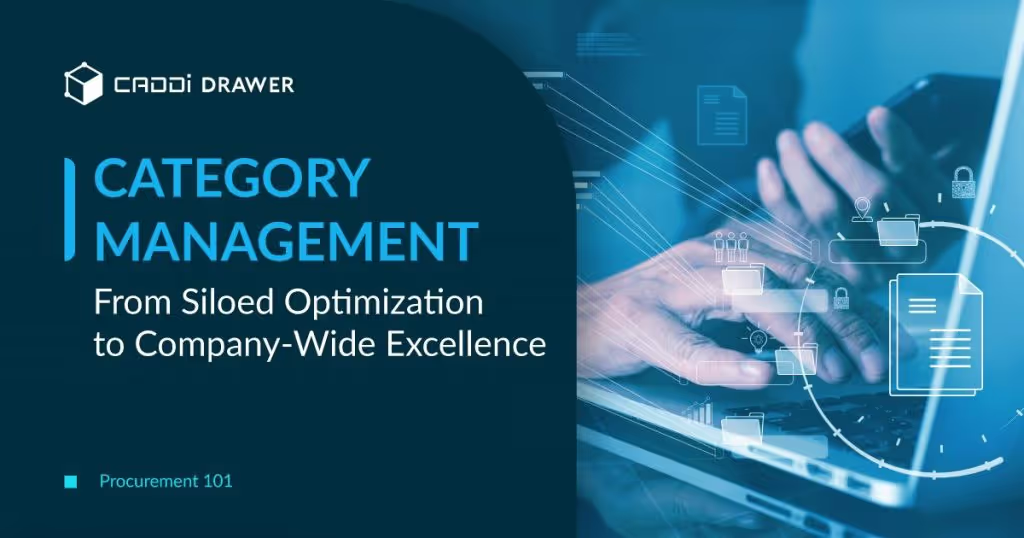

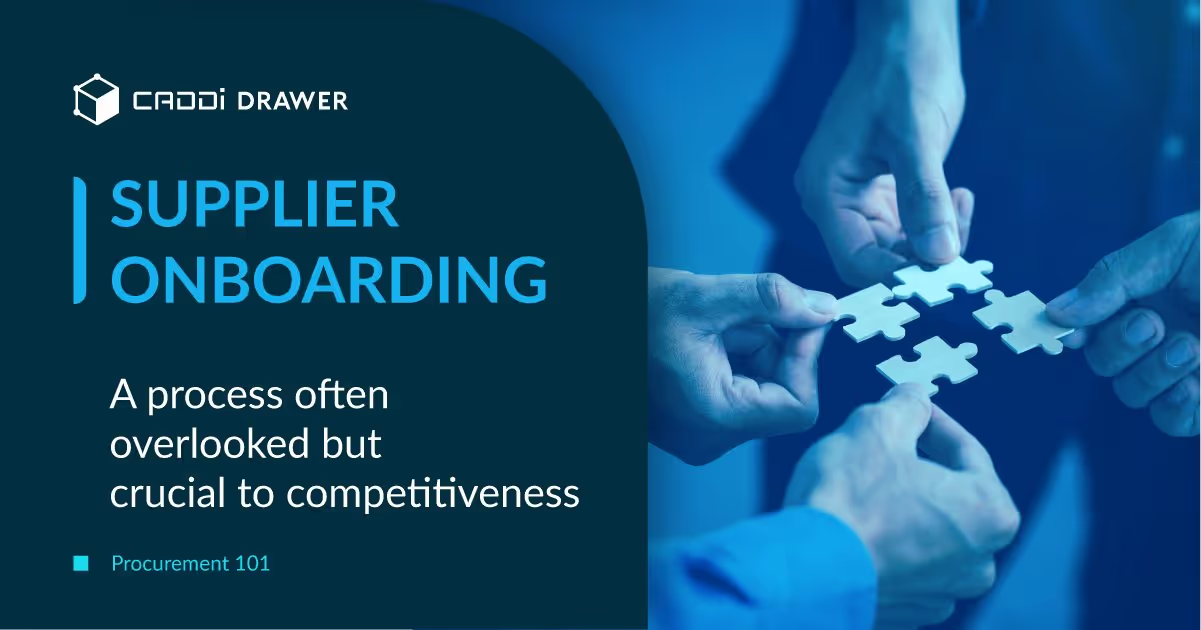

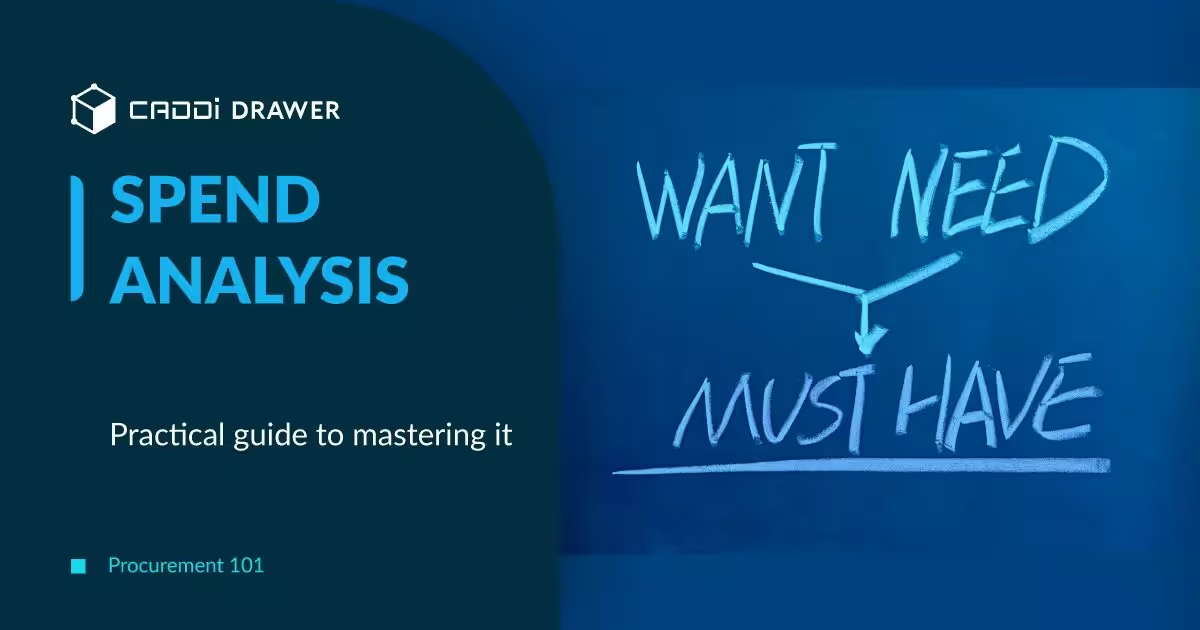

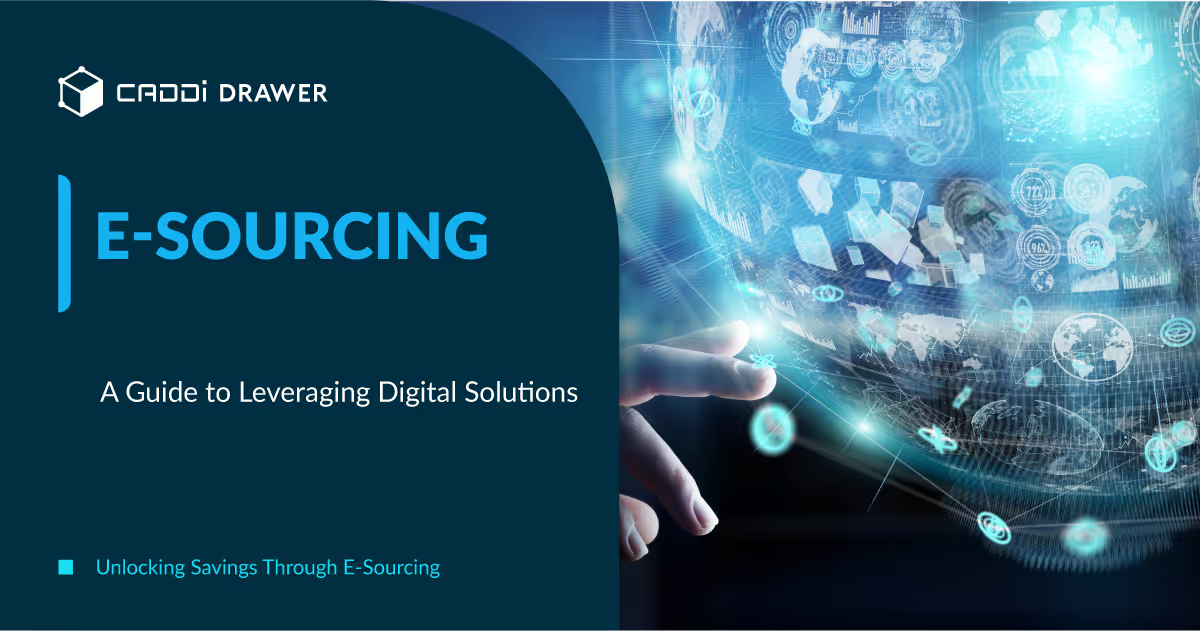



.svg)



.svg)
.svg)
.svg)


